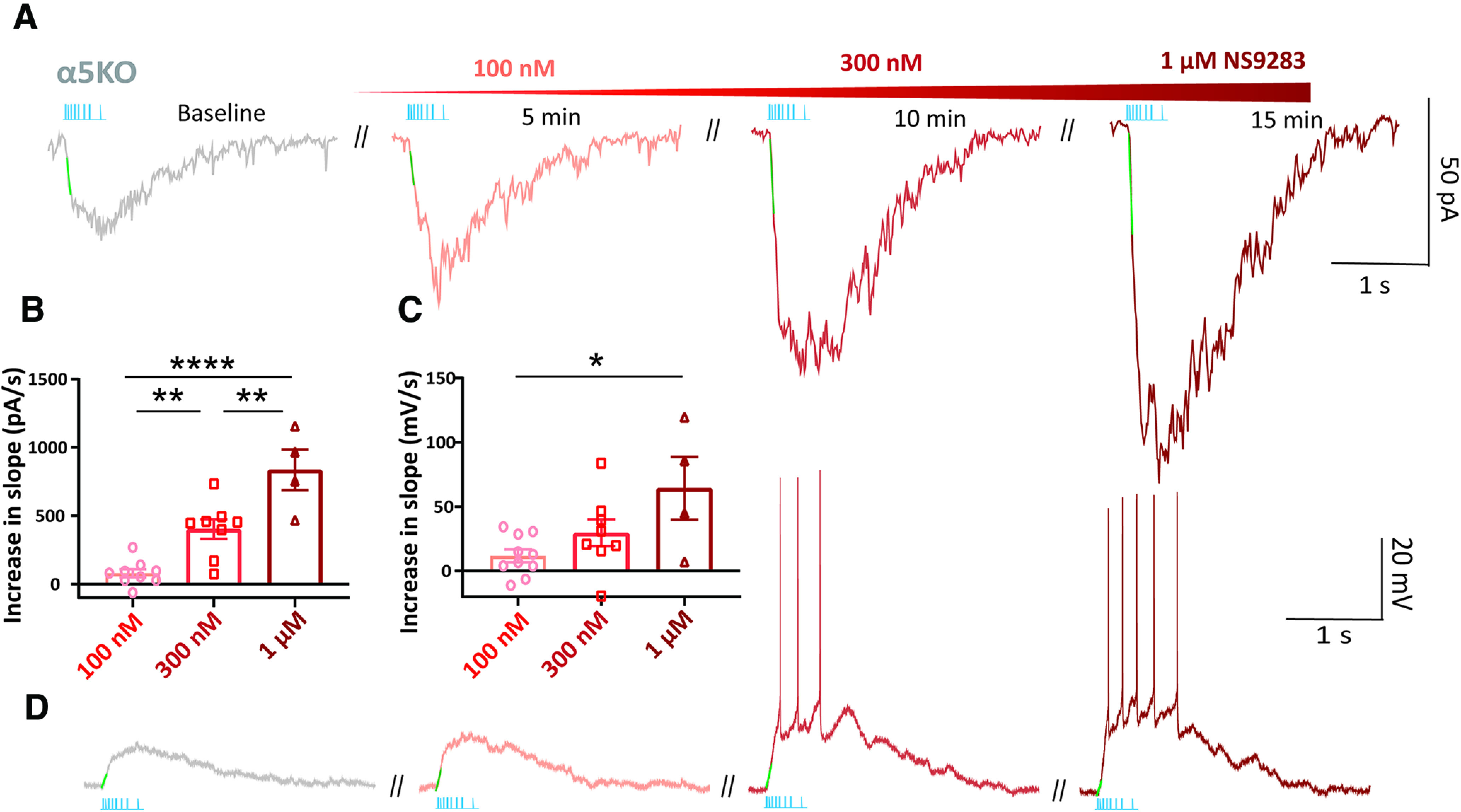Figure 7.

NS9283 enhances endogenous cholinergic signaling in prefrontal cortex of α5KO mice. Dose-dependent increase in the effects of NS9283 (100 nm, 300 nm, and 1 μm) to potentiate the endogenous cholinergic response, in terms of rising slope and amplitude. A, Example voltage-clamp responses from one neuron exposed serially to increasing NS9283 concentrations. B, C, Summary bar graph showing the effects of increasing doses of NS9283 on the rising slope of the currents (B) and depolarization (C) evoked by optogenetic stimulation of endogenous cholinergic release. D, Example current-clamp nicotinic responses from one neuron exposed serially to increasing NS9283. Atropine was present throughout to isolate the nicotinic component of the response. Clearly, NS9283 retains the ability to enhance the endogenous nicotinic response over time without triggering desensitization of this response (*p < 0.05, **p < 0.01, ****p < 0.0001, Sidak's post hoc test).
